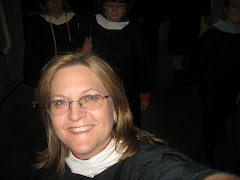Sorry to get that old refrain started, it's eternal loop going in your brain, but I couldn't help myself! I was pondering a title that would reflect the concept of community in the classroom and decided that this age old (well actually only 44 years old!) lyric is exactly what we are trying to say to our students. We all laugh. We all cry. We all have hopes and we all have fears. There is so much to be shared that it's time we're aware, it's a small world after all. So let's get to know each other and see the ways we are alike and the ways we are different. Our classroom can be a small scale model version of the world at large and how we should treat each other with kindness and respect.
I really thought that the article by Sapon-Shevin was the best thing we have read. It offered us a feast of solutions and I like that. I appreciated the positive slant it put on the many possibilities we have as teachers to shape our learning communities into caring supportive partners in education. After all, in the classroom we are the final word on how our room will run. Just as in parenting, we have control over setting the tone in our home as a positive loving environment or a harsh series of expectations and demands. We can have lax standards, being satisfied with behavior that is less than conducive to a pleasant experience. We can set the bar high for each child encouraging them to reach new heights.
Our students come in with vastly different expectations at home. They arrive on our doorstep with vastly different life experiences. But, as the teacher, we can set our expectations for them while they are at school interacting with us. We need to set parameters for the goal of supporting each other and treating everyone in the class with consideration. The community needs to interact in a way that allows for everyone to achieve personal success. It must be a priority for every one to be psychologically safe while in class. There may be a learning curve for this attitude, but I believe that if we set the tone that each student is valuable and expect the same attitude from our students we will be able to settle the issues that do pop up.
Just as we have been talking about knowing our students as teachers, I think it is important to encourage the kids to get to know each student in class. We are more likely to feel compassion, to imagine what others struggles and strengths are if we spend time really getting to know them. I am amazed when working with older grades that students who have been in class together for six or seven months still don't know all the kids in there class. I often know more kids names and something about them after a few random days of substituting than the kids know about each other. I think more community building exercises in all classes would make the classrooms more successful for all the learners.
Sapon-Shevin had quite a few ideas that I really liked. I don't know about the singing at the start of class, but actually letting our hair down and being a little goofy together can be a bonding experience. I think the idea of a grid with students names posted in the room was an effective tool. The students over the course of time need to find something in common with each of the other students in class and mark it at the intersection of their names on the chart.We have something in common with anyone else we meet. It's a small world after all....
I also liked the idea of the want ads where students can advertise for help with their weaknesses or offer their strengths. What a great way to develop our own sense of worth by using our talents to help another.
I have seen several versions of the treasure hunt mentioned by Sapon-Shevin used in classes. I liked the fact that her sample touched on areas that could make students feel like outsiders. To know that we are not alone in our fears or things we feel awkward about is very comforting. There is a lot of positve power in knowing there are others like me.
The first step in creating community is deciding that community is a worthwhile goal. Then we must set up our expectations and goals for achieving it. We must make it clear that the goal is to have everyone succeed and feel accepted and that we will not accept anything less. We can create activities that encourage our students to get to know each other which will naturally enable them to feel more compassion and respond in appropriately supportive ways to other students problems. I think that this safe place, the "small world" we create will allow our students, whatever their life outside our walls, to gain the most possible from the educational opportunities we offer them.
Subscribe to:
Post Comments (Atom)

No comments:
Post a Comment